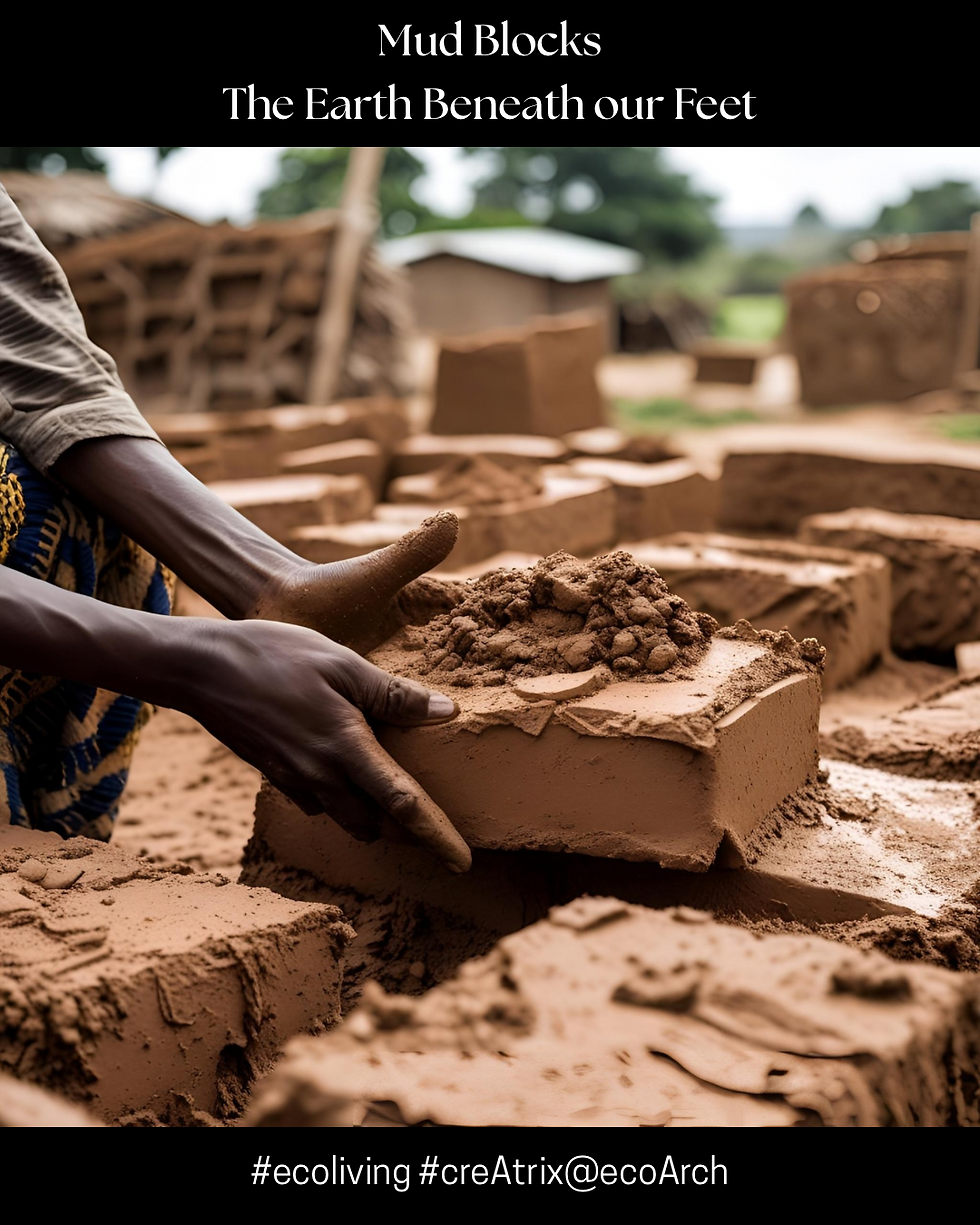Mud Blocks vs Fly Ash Bricks: Which One Builds a Greener Tomorrow?
- Supriya B.S
- Jul 8
- 2 min read
As an ecological architect, I often get asked—what’s the better choice: mud blocks or fly ash bricks? The answer lies in understanding not just the technical specs, but the story of the material, its impact on our planet, and the life it breathes into a space.
Let’s dig a little deeper.
Mud Blocks: The Earth Beneath Our Feet
Mud blocks are made from locally sourced earth, often stabilized with a bit of lime or cement. They’re sun-dried rather than kiln-fired—making them incredibly low in embodied energy. What’s beautiful is that these blocks help regulate indoor temperatures naturally, keeping spaces cool in summer and warm in winter.
They’re breathable, biodegradable, and fully recyclable. When made and used responsibly, mud blocks connect a home to the land it’s built on—quite literally.

Fly Ash Bricks: Waste Transformed
Fly ash bricks are made from the byproduct of coal combustion—a creative reuse of industrial waste. They’re uniform, strong, and used widely in urban construction. The benefit? Diverting fly ash from landfills and giving it a second life as a building material.
However, they still rely on cement and energy-intensive manufacturing. Plus, when transported over long distances, their ecological advantage diminishes.

The Conscious Choice
If you’re building in a rural or semi-urban area with access to suitable soil, mud blocks are a soulful and sustainable choice—rooted in tradition, yet deeply relevant today. In more industrial or urban setups, fly ash bricks offer a viable alternative—turning pollution into possibility.

In the end, sustainability is not one-size-fits-all. It’s about context, climate, community, and consciousness. The goal? To build not just structures, but stories that heal the Earth.
Let your home reflect the values you believe in. Choose wisely, build consciously.



Comments